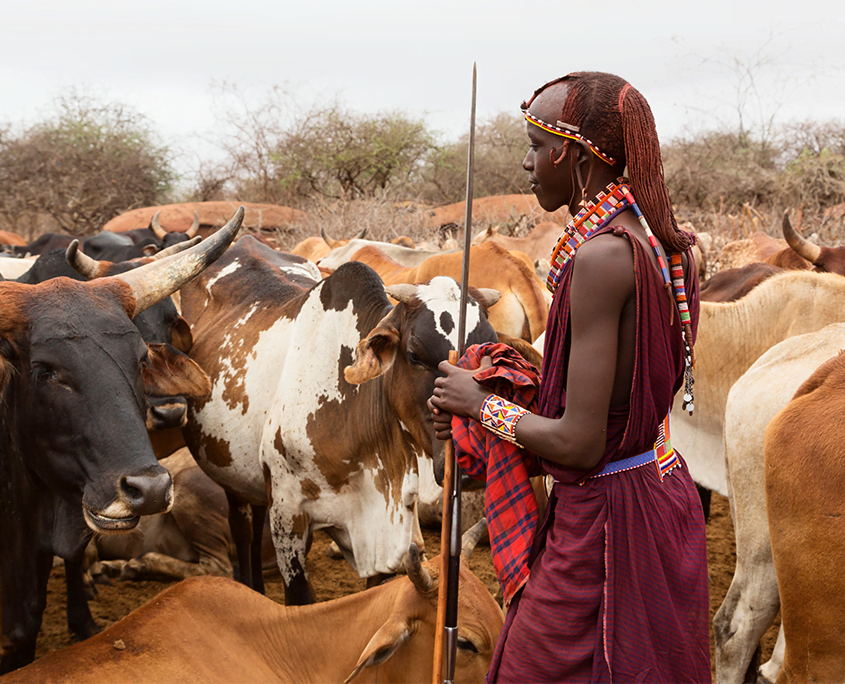A young Maasai moran herding cattle
Photo Credit: brittak/iStock/Getty Images
World Day to Combat Desertification and Drought
Desertification and drought are issues of a global dimension in that they affect all regions of the world, and that joint action by the international community is needed to address them, particularly in Africa. The United Nations General Assembly declared 17 June to be “World Day to Combat Desertification and Drought” by its resolution A/RES/49/115 adopted in December 1994
Drought occurs when there are prolonged periods of lack of water supply, it can be surface water or groundwater and can last for a period of months or years, and this is what leads to desertification within areas. During a drought period, food and water supply are always low also affecting the habitat, humans, and animals.
Desertification is the degradation of land in arid, semi-arid, and dry sub-humid areas. It is caused primarily by human activities and climatic variations. Desertification does not refer to the expansion of existing deserts. It occurs because dryland ecosystems, which cover over one-third of the world’s land area, are extremely vulnerable to overexploitation and inappropriate land use. Poverty, political instability, deforestation, overgrazing, and bad irrigation practices can all undermine the productivity of the land.
The World Day to Combat Desertification and Drought 2019 Theme is “Let’s Grow the Future Together”
And the key issues are:
- Land & Drought— “By 2025, 1.8 billion people will experience absolute water scarcity, and 2/3 of the world will be living under water-stressed conditions.”
A complex and slowly encroaching natural hazard with significant and pervasive socio-economic and environmental impacts that cause more deaths and displace more people than any other natural disaster. - Land & Human Security— “By 2045 some 135 million people may be displaced as a result of desertification.”
Achieving land degradation neutrality -by rehabilitating already degraded land, scaling up sustainable land management, and accelerating restoration initiatives- is a pathway to greater resilience and security for all. - Land & Climate— “Restoring the soils of degraded ecosystems has the potential to store up to 3 billion tons of carbon annually.”
The land use sector represents almost 25% of total global emissions. Its rehabilitation and sustainable management is critical to combating climate change.
Dryland ecosystems, which cover over one-third of the world’s land area, are extremely vulnerable to overexploitation and inappropriate land use. The decisions we make every day on what to buy, eat, drink, wear, and how to travel – all have an impact on land resources.
The World Day to Combat Desertification is observed every year to promote public awareness. The day is a unique moment to remind everyone that land degradation neutrality (LDN) is achievable. The commemoration of the day is led by the Secretariat of the United Nations Convention to Combat Desertification.



